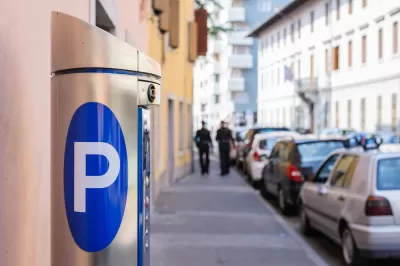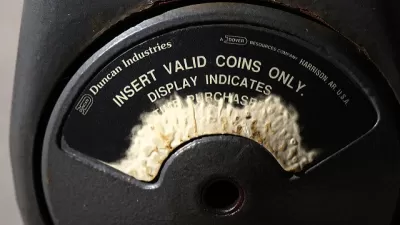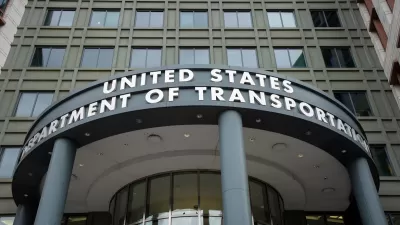The influence of Donald Shoup's classic book, "The High Cost of Free Parking," is becoming more and more apparent in more and more cities around the country.

"A handful of major cities across the U.S. are changing how they charge for some of the most valuable property they manage — on-street parking spaces," writes Rebecca Beitsch to introduce an article for the Pew Charitable Trusts.
Beitsch notes that for a long time, cities haven't valued on-street parking as much as drivers have. That is all changing, however:
Now, some major cities are seeking to take advantage of their supply and motorists’ demand with so-called demand-price parking. Rather than charge a flat rate for each spot in every area of the city, they are demanding motorists pay $4, $6 or up to $8 an hour for a spot on a busy street, close to shops and restaurants, while keeping hourly prices lower on less busy streets just a few blocks over.
Beitsch is describing the tenants of parking as revolutionized by Donald Shoup, as Planetizen readers are aware, while also adding a survey of the cities undertaking new approaches to the pricing of on-street parking. Programs in Washington, D.C., San Francisco, Los Angeles, and Seattle are mentioned—each citied for unique insights into the new practices of parking management. Beitsch also deliberately addresses common concerns about the new parking programs—like if they are harmful to the poor and whether or not they achieve their intended outcomes.
FULL STORY: Cities Try $6, $8 Hourly Parking to Cut Congestion, Pollution

Study: Maui’s Plan to Convert Vacation Rentals to Long-Term Housing Could Cause Nearly $1 Billion Economic Loss
The plan would reduce visitor accommodation by 25,% resulting in 1,900 jobs lost.

North Texas Transit Leaders Tout Benefits of TOD for Growing Region
At a summit focused on transit-oriented development, policymakers discussed how North Texas’ expanded light rail system can serve as a tool for economic growth.

Why Should We Subsidize Public Transportation?
Many public transit agencies face financial stress due to rising costs, declining fare revenue, and declining subsidies. Transit advocates must provide a strong business case for increasing public transit funding.

How Community Science Connects People, Parks, and Biodiversity
Community science engages people of all backgrounds in documenting local biodiversity, strengthening connections to nature, and contributing to global efforts like the City Nature Challenge to build a more inclusive and resilient future.

Alabama: Trump Terminates Settlements for Black Communities Harmed By Raw Sewage
Trump deemed the landmark civil rights agreement “illegal DEI and environmental justice policy.”

Dear Tesla Driver: “It’s not You, It’s Him.”
Amidst a booming bumper sticker industry, one writer offers solace to those asking, “Does this car make me look fascist?”
Urban Design for Planners 1: Software Tools
This six-course series explores essential urban design concepts using open source software and equips planners with the tools they need to participate fully in the urban design process.
Planning for Universal Design
Learn the tools for implementing Universal Design in planning regulations.
City of Santa Clarita
Ascent Environmental
Institute for Housing and Urban Development Studies (IHS)
City of Grandview
Harvard GSD Executive Education
Toledo-Lucas County Plan Commissions
Salt Lake City
NYU Wagner Graduate School of Public Service





























